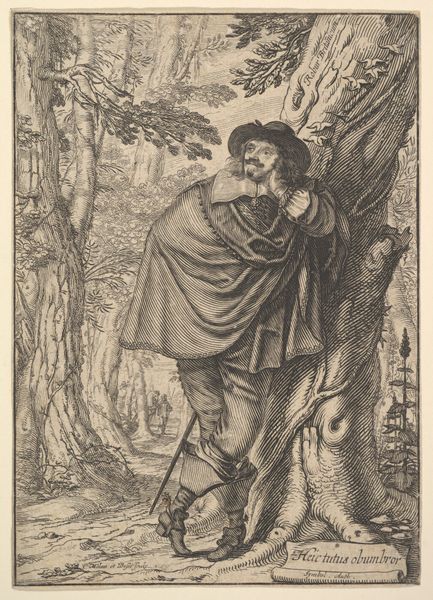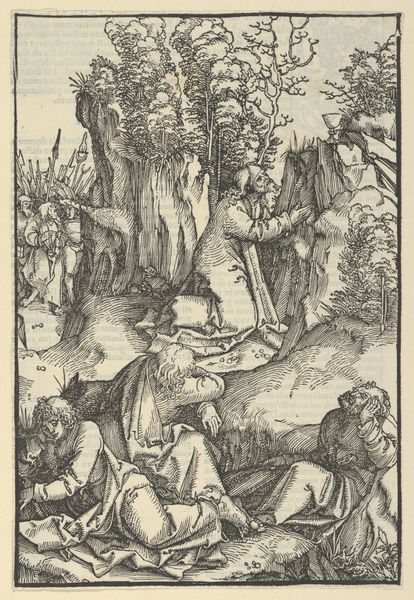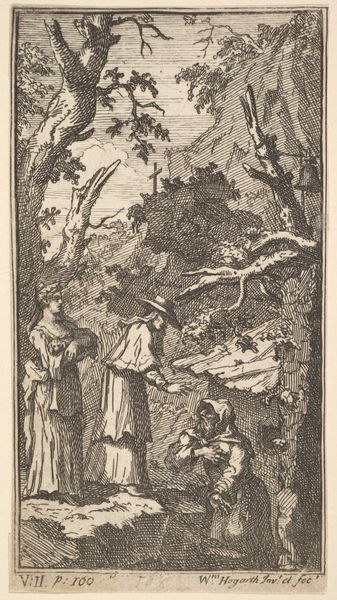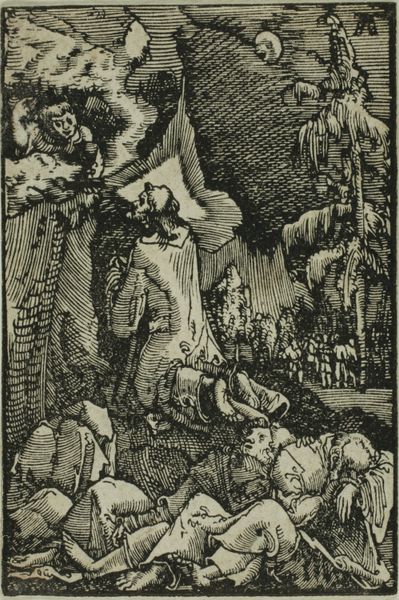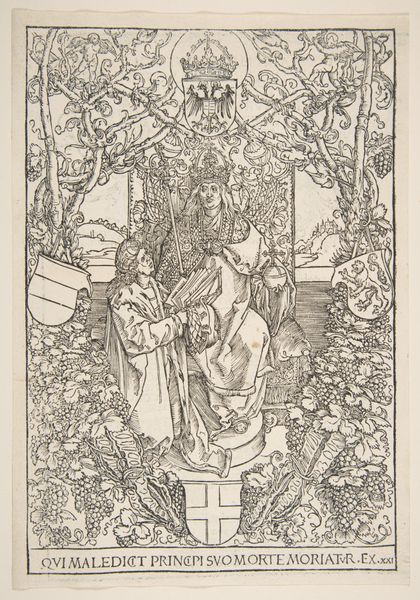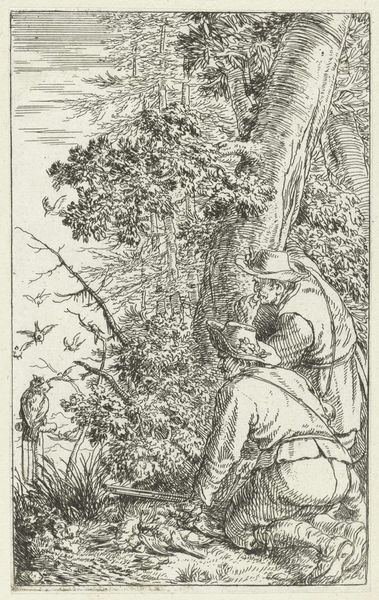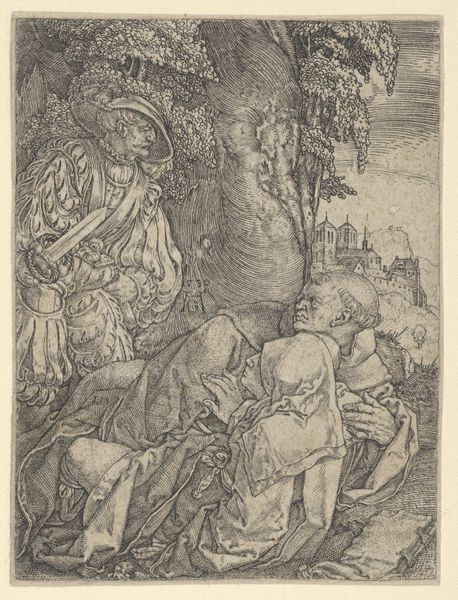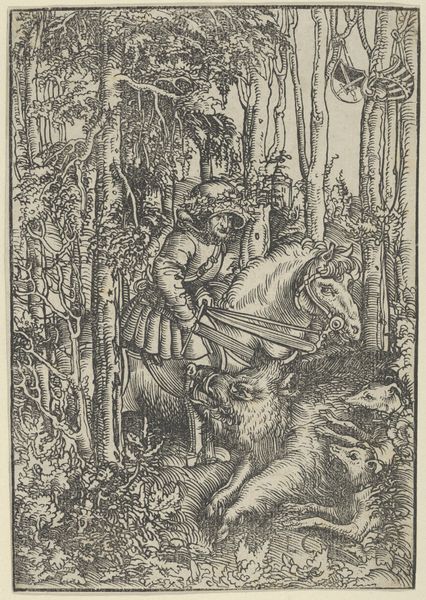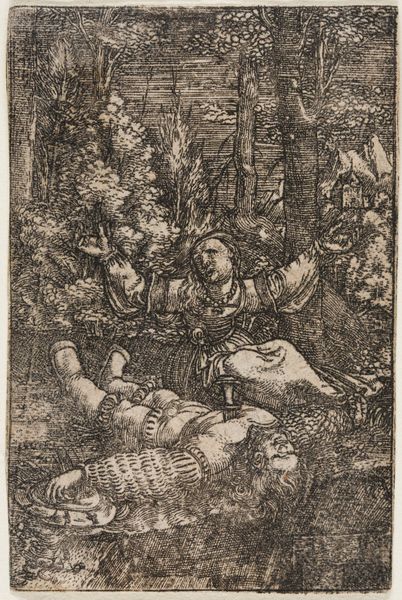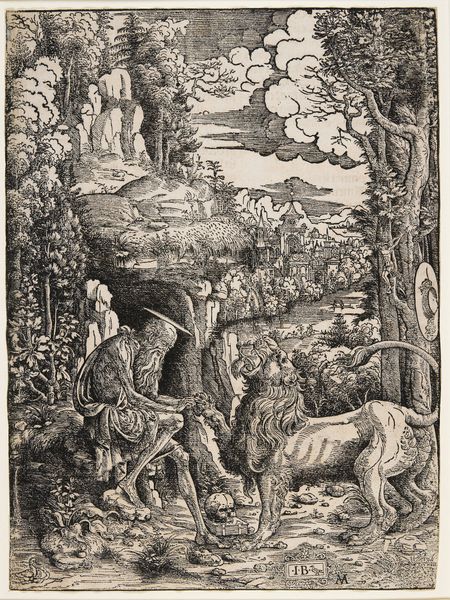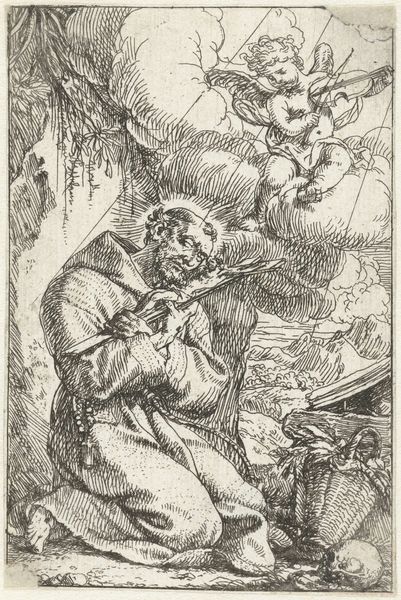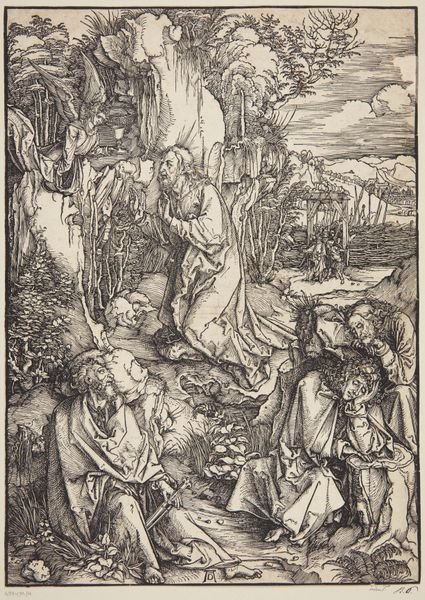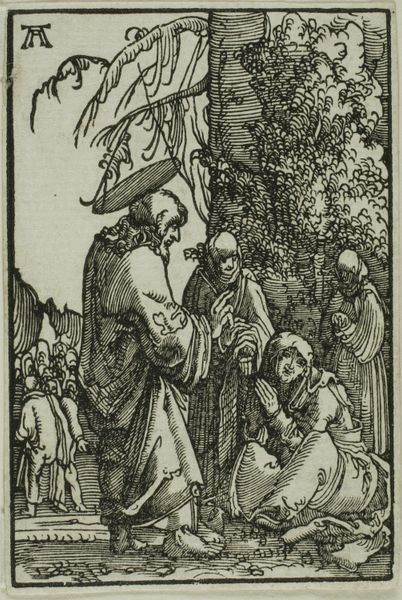
drawing, print, ink, woodcut, engraving
#
drawing
# print
#
landscape
#
figuration
#
11_renaissance
#
ink
#
woodcut
#
line
#
history-painting
#
northern-renaissance
#
engraving
Copyright: National Gallery of Art: CC0 1.0
Sebald Beham created this woodcut, Christ on the Mount of Olives, sometime in the first half of the sixteenth century. It depicts the night before Jesus’s crucifixion when he prayed with his disciples in the Garden of Gethsemane. It was a turbulent time. Beham was from Nuremberg, a city at the heart of the Reformation. His early art was explicitly anti-Catholic, reflecting the city’s adoption of Lutheranism. Later, Beham was exiled for his radical views, which included denying the authority of secular government. Religious imagery in this period became highly contested, and woodcuts like this were a cheap and effective way to disseminate ideas. Looking at the image, we see Christ in the foreground, kneeling and praying. The disciples sleep nearby, while an angel appears in the upper right, offering Christ a cup, a symbol of his impending suffering. The composition is dense and crowded, filled with intricate detail. The style is typical of German Renaissance art, which often emphasized realism and emotional intensity. To fully understand this artwork, we need to consider its historical and social context, researching the artist, the religious controversies of the time, and the role of art in shaping public opinion.
Comments
No comments
Be the first to comment and join the conversation on the ultimate creative platform.

